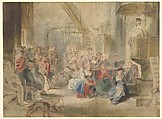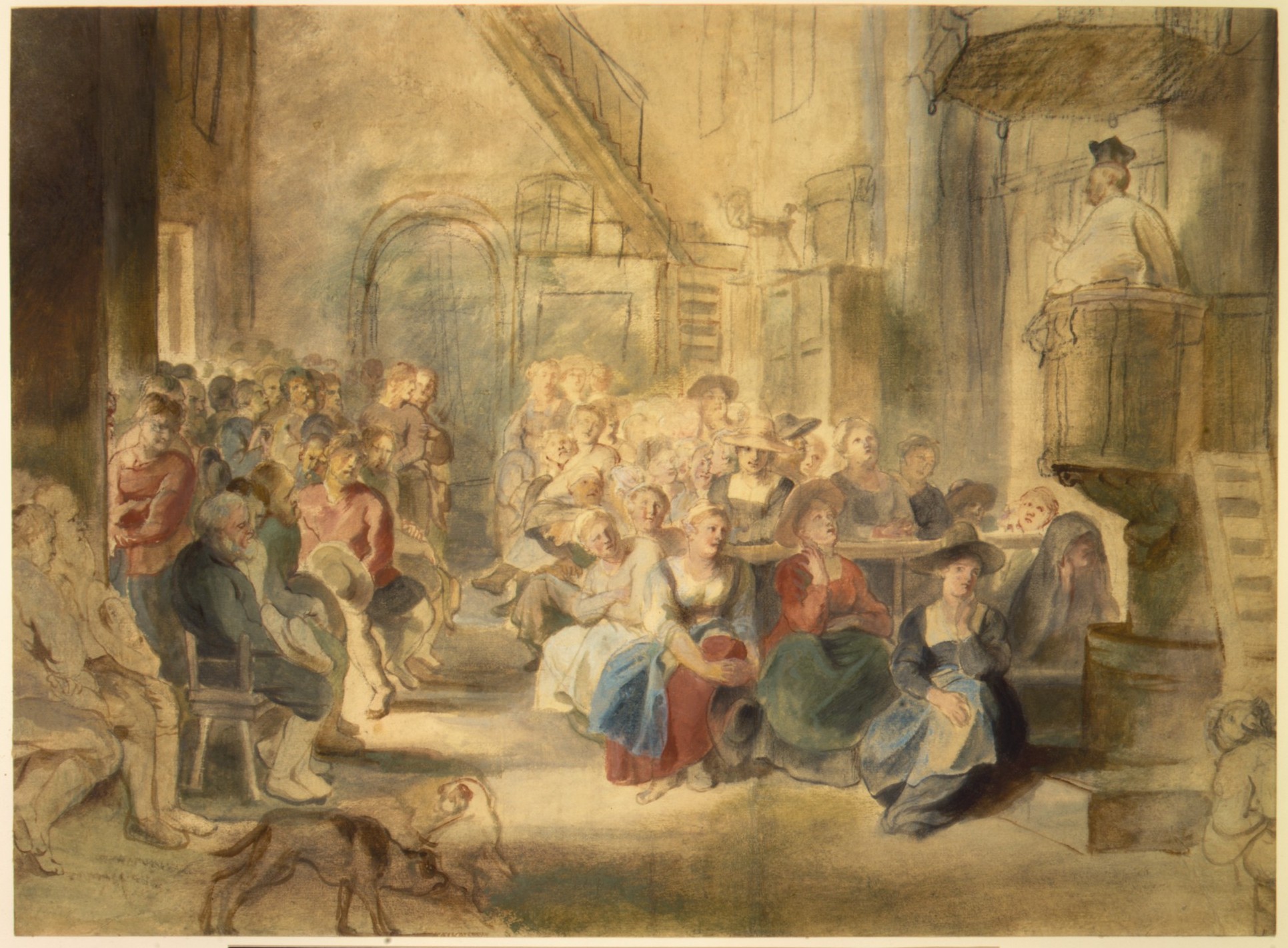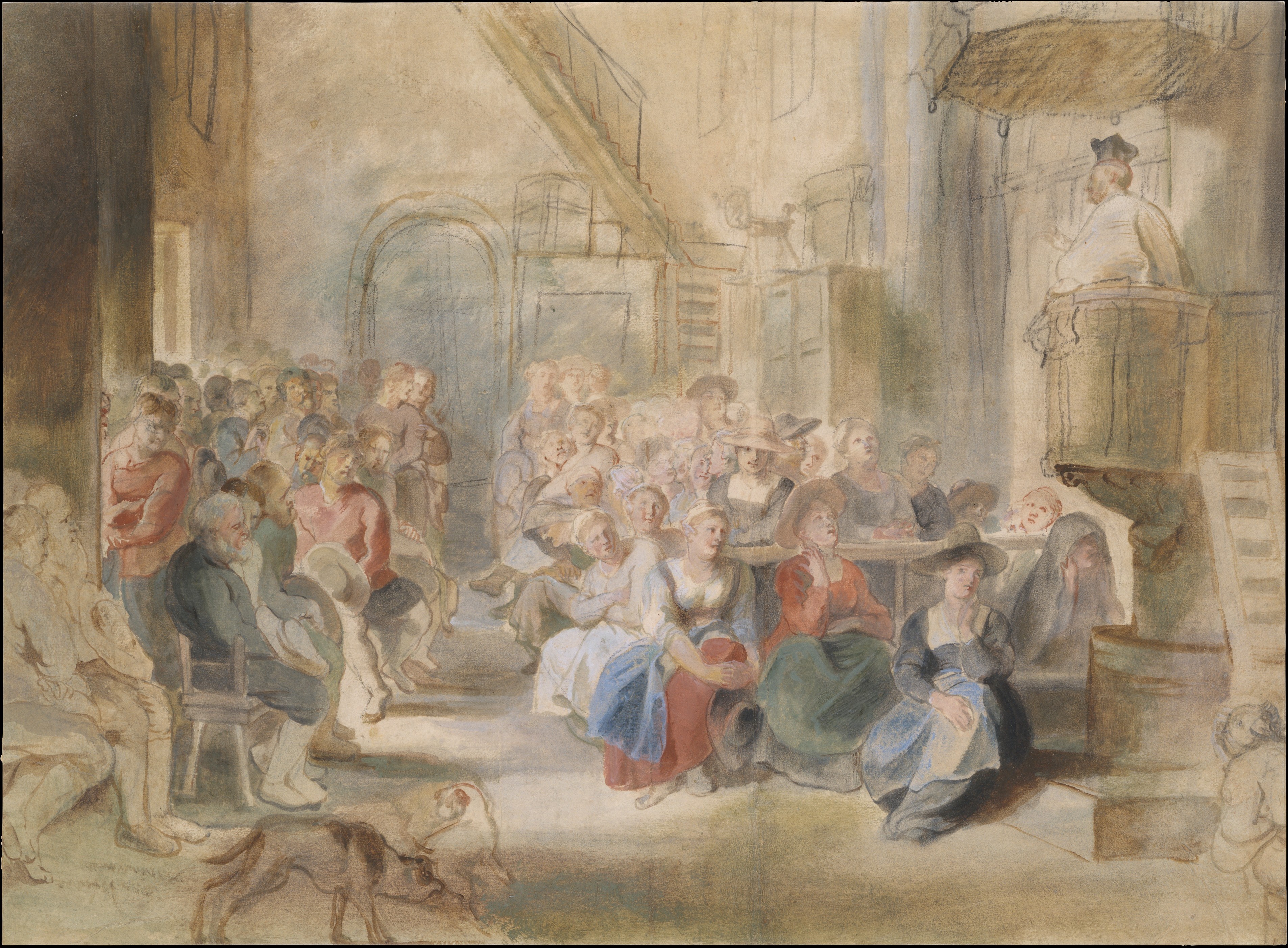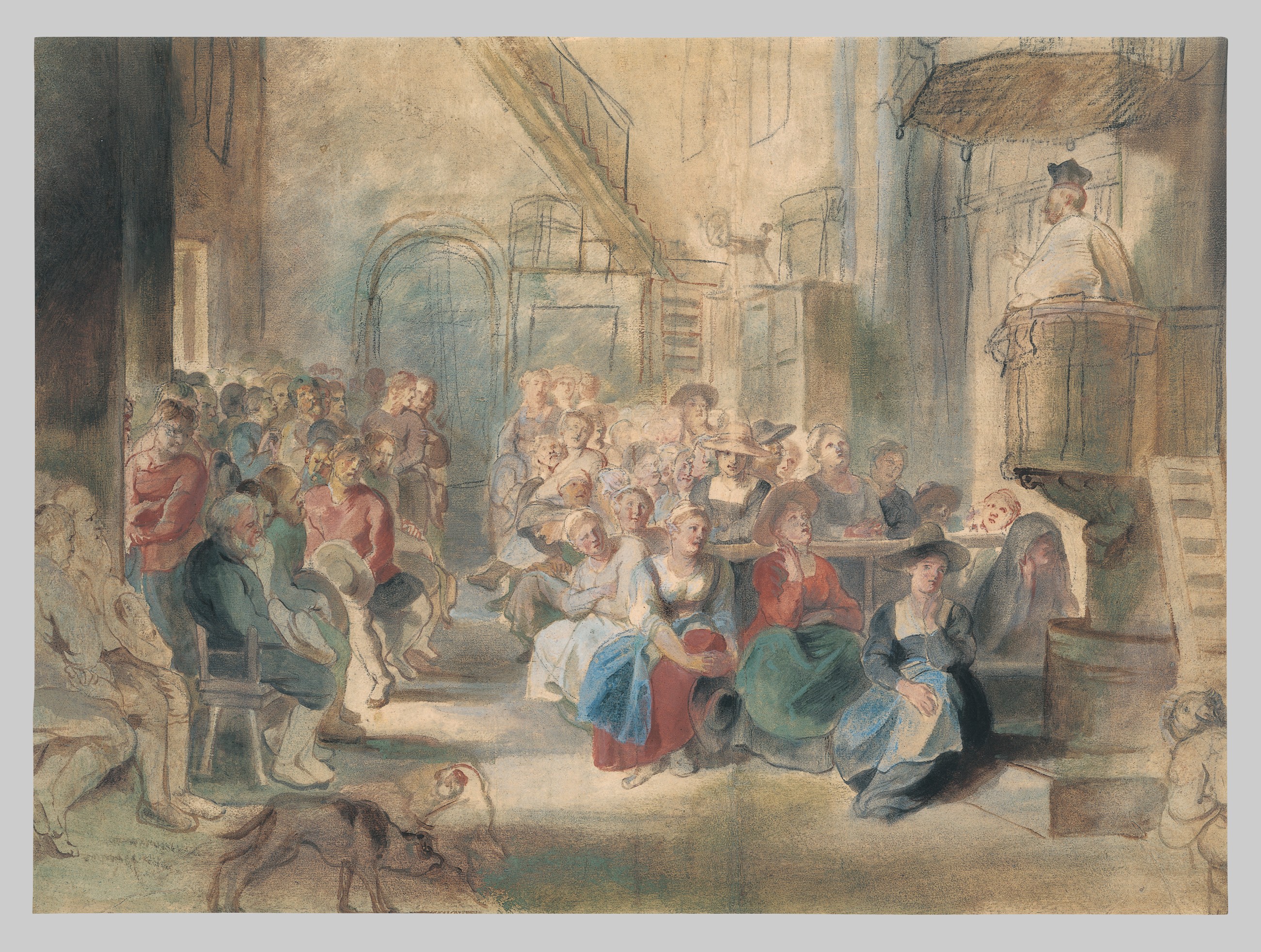A Sermon in a Village Church
Peter Paul Rubens Flemish
Not on view
This sheet, a relatively recent addition to Rubens's drawn oeuvre, is exceptional in several ways. Even if it seems to have been slightly cropped (especially at the left and the top), it remains one of the artist's largest works on paper. Its technique is much richer than that of most of his other drawings, combining chalk and paints, and gives the work the appearance of an oil sketch. The subject matter may be considered unique for Rubens. In a simple village church, a Catholic priest can be seen preaching to farmers and peasants—men on the left and women on the right—who listen with varying degrees of attentiveness. Obviously observed from nature, the scene can be connected only with the landscapes and studies related to farm life that he made at the end of his career, when he spent much of his time on the estate near Malines that he acquired in 1635. Rubens's composition (if not the vivacity and freshness of the drawing) has been repeated by other artists in a few painted copies. There is, however, no indication that Rubens himself made the drawing for any other reason than to record a moment he had witnessed and thought worthy of his talents.
This image cannot be enlarged, viewed at full screen, or downloaded.
This artwork is meant to be viewed from right to left. Scroll left to view more.








